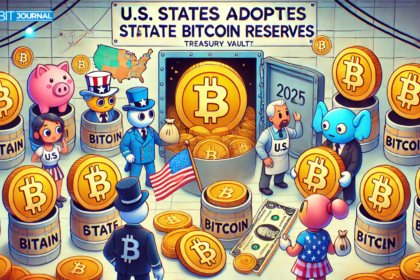The Central Bank of Russia is stepping in to tighten control over crypto, forcing new restrictions on Tether (USDT) that make it no longer a popular choice for local investors. Central bankers decided on the moratorium after some USDT accounts were frozen in March.
The measure also comes in advance of the country’s crypto sandbox program which starts on May 26. The purpose of the new rules is to set guidelines for how crypto can be adopted in trade with other nations and to reduce the types of digital assets authorized.
USDT Fails to Meet New Legal Criteria in Russia

Legal specialists and crypto advisors point out that the rules are specifically designed to exclude dollar-backed stablecoins, as the Russian Central Bank regards them as a threat to the country’s financial liberty.
Mikhail Uspensky, a crypto legal advisor, stated that USDT does not meet the specified criteria. Examples like Tether, whose tokens can be halted by the issuer, no longer meet the new legal criteria.
From now on, only tokens minted in friendly countries without sanctions against Russia can be used lawfully. It stresses that authorized digital assets should avoid being blocked by regulators, noting the case of Tether when it froze customer wallets.
A meeting between Russian President Vladimir Putin and Ukrainian counterpart Volodymyr Zelenskiy could take place if the two sides come to certain agreements, Interfax reported https://t.co/KykMbJbU2I
— Bloomberg (@business) May 17, 2025
Tether’s U.S. Ties Raise Alarm in Russia
Tether’s increased cooperation with U.S. law enforcement, particularly its role in blocking wallets connected to Garantex, has added to Russian concerns. Experts explain that having a reserve of USDT goes counter to Russia’s attempts to promote independence in digital assets.
According to Gukasyan, Tether’s compliance with U.S. sanctions and ability to freeze Russian users’ funds means that Russians using Tether are at a high risk. Exactly, this is what the new rules are working to prevent.
USDT might soon be unavailable to domestic Russian investors, but it will likely continue playing a key role in the country’s global trade efforts. Uspensky and Gukasyan explained that the Central Bank developed the sandbox to aid cross-border payments, not for retail crypto trading.
Russia Launches Crypto Payment Pilot Programs

Currently, Russian companies are still permitted to settle import-export deals using USDT and similar assets. Nevertheless, the rules are making it harder for the public to participate in Russia’s crypto field.
The Central Bank intends to use the sandbox to help the world’s trading countries conduct their business with crypto, but under close supervision. Companies joining the program can only use digital assets for payments according to the new rules and by using tokens that comply with them.
In addition to the sandbox, Russia is working on two tests to transform cross-border payment systems. The legislation contains rules for trading digital assets such as gold which people can use in their digital transactions. While welcoming overseas businesses is a difficult process, officials say things are moving forward.
Russia Advances Plans for National CBDC
In late 2024, a second program was introduced to facilitate cryptocurrency use in import and export activities. First trades were done in December and now the Fed is expanding them to match a new monetary policy approach.
Russia is moving forward by introducing a digital ruble and participating in BRICS Bridge, an international CBDC system that supports payments in national currencies.
The restriction on USDT in Russia sends a clear message to its retail crypto group. Tether which had been widely used because it was pegged to the dollar, is now not as preferred as before due to increasing pressures from both geopolitical and regulatory fronts.
Russia Chooses Sovereignty Over Crypto Ease

This is not only about obeying regulations it has to do with trust as well, said an anonymous trader based in Moscow. When your money in Tether can be frozen whenever Tether wishes, it ends up creating issues for users.
As Russia’s Central Bank puts sovereignty first and not convenience and interoperability, their crypto policies are creating a separate system that leaves out Western-connected stablecoins and looks for support from other countries.
Conclusion
Russia’s new crypto regulations signal a clear shift away from USDT for domestic investors, prioritizing financial sovereignty and security. Even though stablecoins like Tether are used for cross-border trade, the new legal rules and sandbox program are shaping up Russia’s policy on cryptocurrencies.
Follow us on Twitter and LinkedIn, and join our Telegram channel to be instantly informed about breaking news!
FAQs
1. Why is USDT restricted in Russia?
Because it can be frozen by issuers, USDT is seen as a threat to Russia’s financial sovereignty.
2. Can Russian firms still use USDT internationally?
Yes, USDT is allowed for cross-border trade under the Central Bank’s crypto sandbox.
3. What crypto initiatives is Russia developing?
Russia is launching pilot programs with tokenized assets, a digital ruble, and the BRICS Bridge CBDC system.
Glossary Of Key Terms
USDT (Tether):
USD-backed stablecoin used in crypto trading.
Stablecoin:
Crypto pegged to stable assets like the dollar.
Central Bank of Russia:
Regulates Russia’s financial and crypto rules.
Crypto Sandbox:
Test zone for regulated crypto trade use.
Friendly Countries:
Nations without sanctions against Russia.
Wallet Freeze:
Blocking access to crypto wallets.





























